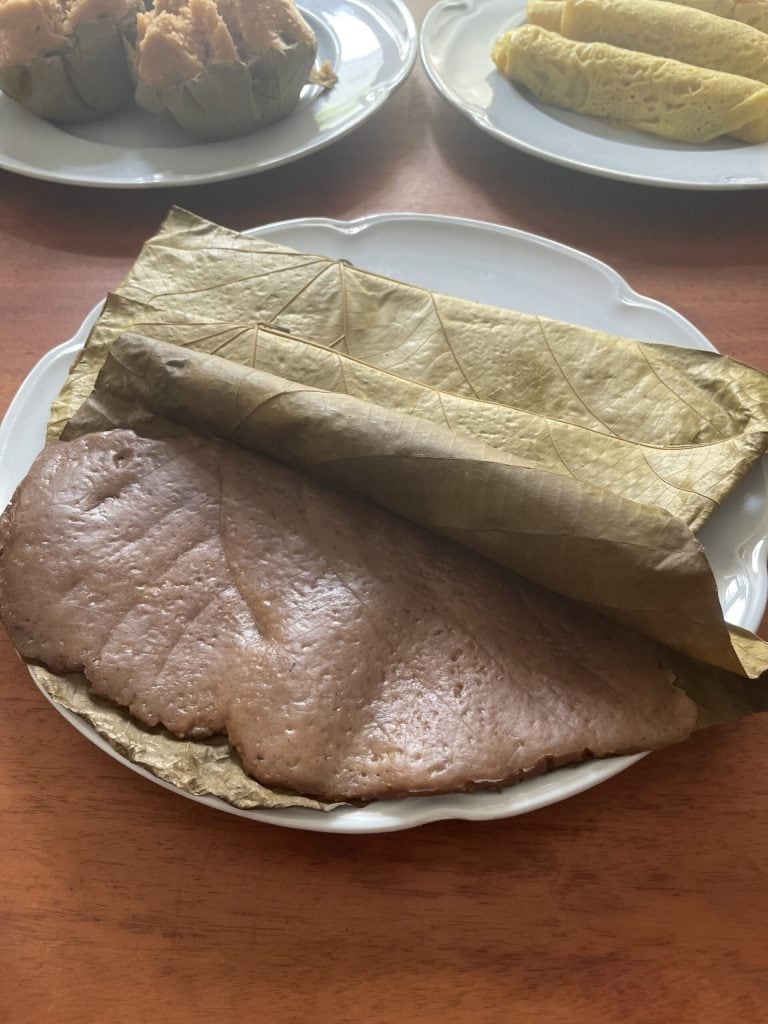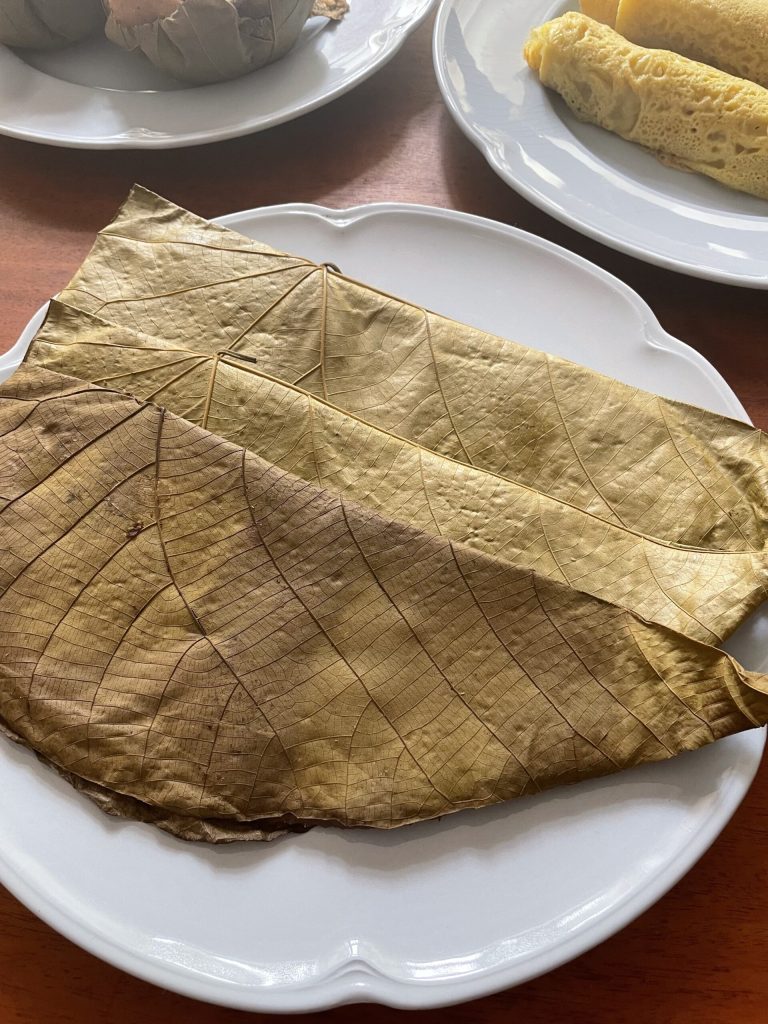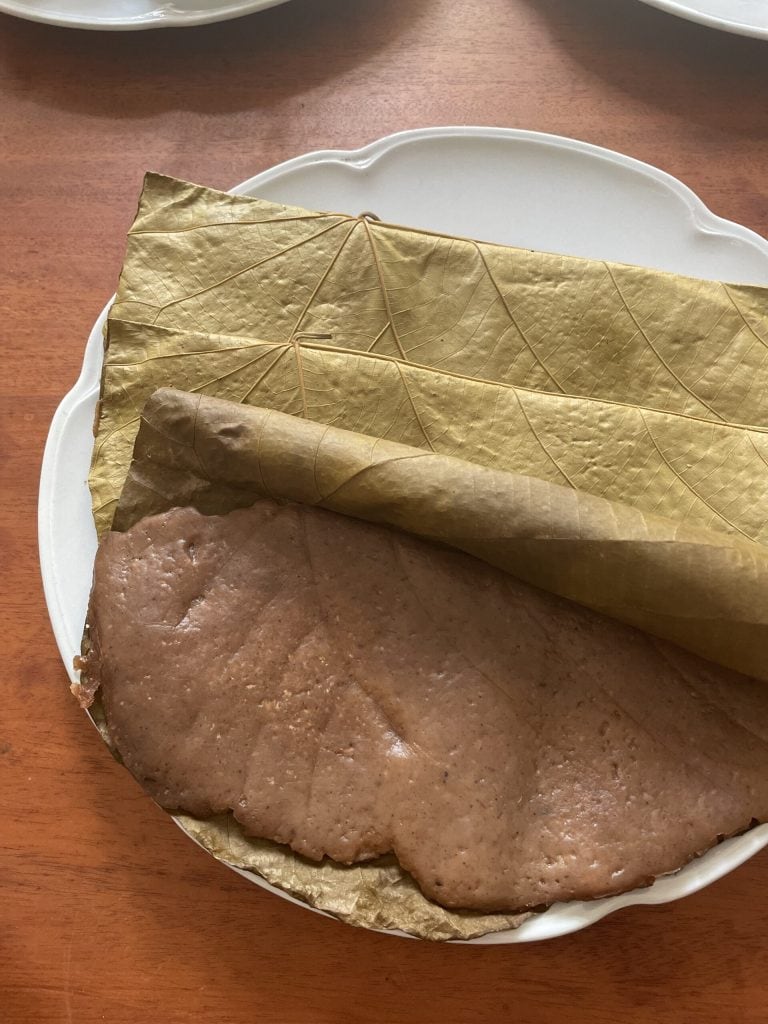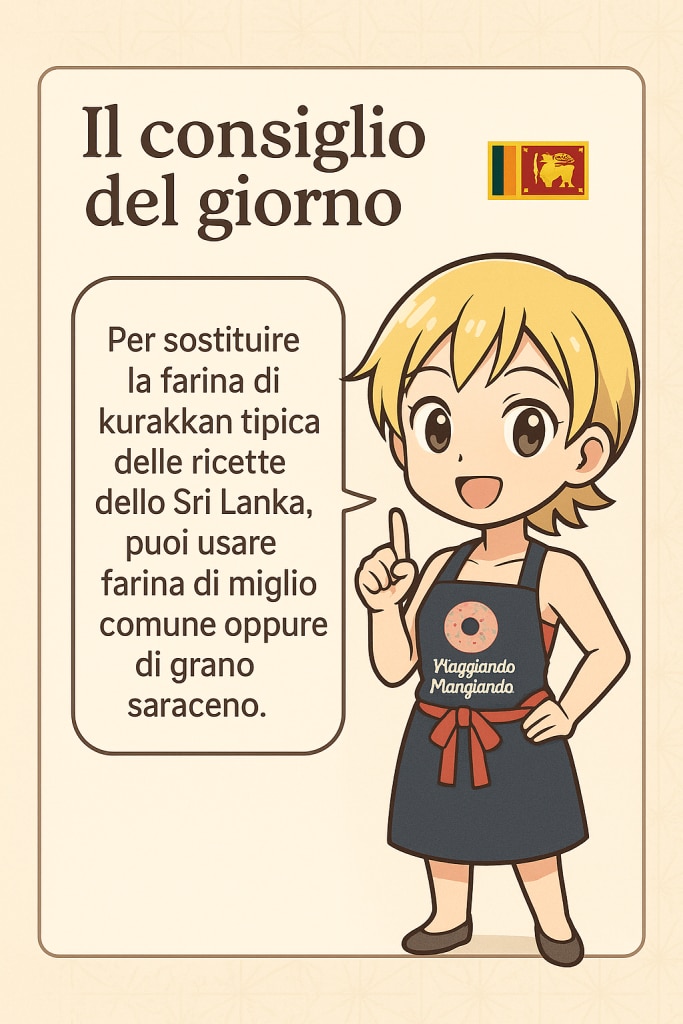Halapa (or Helapa) is a traditional Sri Lankan sweet made with a sweet dough wrapped in kenda (Ceylon oak) leaves and steamed, considered a “sweet wrapped in nature” because it is wrapped in leaves and steamed.
Halapa has rural and farming origins. It was a sweet made at home with easily available local ingredients: coconut, jaggery, and kurakkan (ragi).
Often served during religious occasions, festivals, or simply as an afternoon snack with a cup of tea. Naturally gluten-free.
In the photo, the beautiful breakfasts at Vila Nivartana in Bentota during my trip to Sri Lanka in October 2025.

- Difficulty: Easy
- Cost: Very cheap
- Preparation time: 5 Minutes
- Portions: 8 Pieces
- Cooking methods: Steaming
- Cuisine: Sinhala
- Seasonality: All seasons
Ingredients
- 1 3/4 cups kurakkan flour (or millet or buckwheat)
- 1 1/2 cups fresh grated coconut (or shredded)
- 4 1/4 oz jaggery (grated or melted)
- 1/2 teaspoon cardamom powder
- to taste salt
- 8 leaves kenda (or banana, washed and passed over flame)
Steps
In a bowl, combine kurakkan flour, coconut, and jaggery.
Add the cardamom and a pinch of salt.
Gradually pour in about 1/3 to 1/2 cup of water (enough for a soft dough), until you get a sticky but moldable dough, not too liquid.Place a spoonful of dough on each leaf, flatten it slightly, and fold it like a wallet.
Place the packages in a steamer and steam for 15-20 minutes.
Let them cool for a few minutes before serving. They taste great warm too.

FAQ (Frequently Asked Questions)
What is kurakkan or ragi flour?
There is no difference: “kurakkan” and “ragi” are two names for the same cereal, also known as Indian millet or finger millet.
It is a nutritious flour, naturally gluten-free, used in many recipes, especially in African and Asian countries.
Different Names:
“Kurakkan” is the name used in Sri Lanka, while “ragi” is more common in other regions, such as India, where it is also called “Indian millet flour”.
Cereal:
Along with the names “kurakkan” and “ragi”, the cereal is also known as “finger millet” for its spike that resembles five fingers.
Nutritional Properties:
Kurakkan/ragi flour is a good source of protein, vitamins, and minerals and has low carbohydrate content. Being gluten-free, it is an excellent option for those with celiac disease or gluten intolerance.
Uses:
It can be used as a substitute for wheat flour to make bread, pancakes, and other dishes.What is an easily available alternative to kurakkan flour?
→ Buckwheat flour (gluten-free, with a rustic taste similar to ragi)
Alternatively:
Common millet flour (more delicate)
Mix of fine corn flour + a bit of whole wheat flour (if it doesn’t need to be gluten-free)
Among all, buckwheat flour is the most similar in flavor, color, and texture. You can substitute it in equal quantity (1:1) in the Halapa recipe.
What are kenda leaves?
Kenda leaves are the leaves of the Ceylon Oak tree, botanically known as Schleichera oleosa.
In Sri Lanka, they are traditionally used for:
wrapping steamed sweets like Halapa
natural food preservation
imparting a light and unique aroma during cooking
Characteristics:
They have an elongated shape and robust texture
They withstand steam well
Release a delicate aroma during cooking
Common alternatives:
If you can’t find kenda leaves, you can use: banana leaves (the most authentic substitute)
Parchment paper (only if seeking practicality, but without the natural aroma).

